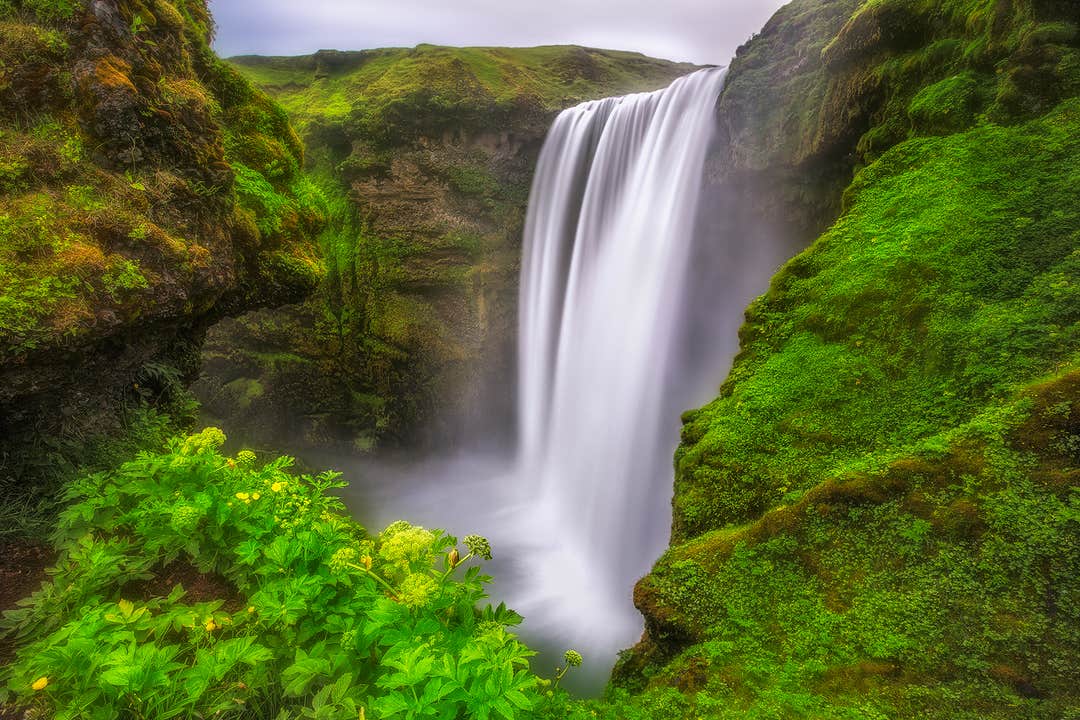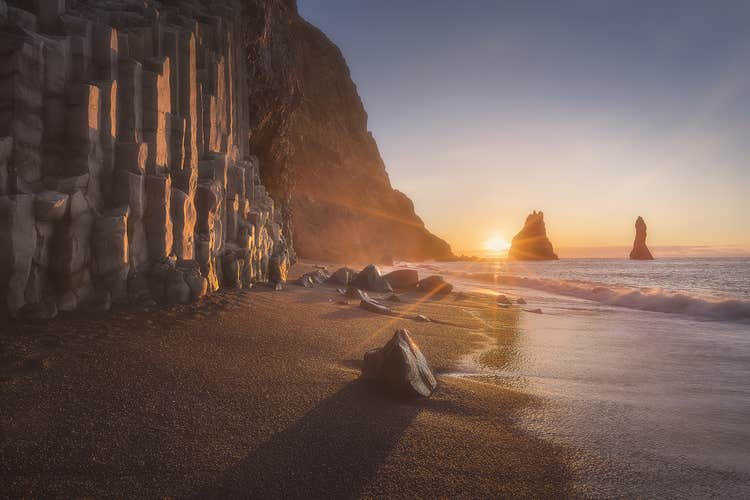소개
요약
소개
아이슬란드 남부 해안(South Coast)을 따라 이틀간 아이슬란드에서 가장 특별한 자연 명소를 탐험하는 잊지 못할 여행을 떠나보세요. 폭포와 빙하부터 극적인 검은 모래 해변과 고요한 빙하호수까지, 다채로운 풍경을 짧은 시간 내에 둘러보기에 완벽한 투어입니다.
여행은 레이캬비크(Reykjavik)에서 시작되며, 숙소 또는 가까운 버스 정류장에서 픽업해 드립니다. 편안한 미니버스에 오르면 이 특별한 여정을 함께할 숙련된 운전기사 겸 가이드, 그리고 다른 여행객들과 인사를 나눠보세요!
첫날은 남부 해안의 경이로운 폭포들을 탐험하는 일정입니다. 첫 번째 방문지는 아이슬란드에서 가장 유명한 폭포 중 하나인 셀야란드스포스(Seljalandsfoss)로, 폭포 뒷편의 난 작은 통로로 잘 알려진 곳입니다. 멀지 않은 곳에 있는 숨겨진 보석 같은 폭포인 글류프라부이(Gljufrabui)도 방문할 텐데요. 거대한 바위들 사이에 자리한 이 폭포는 가까이 다가갈수록 그 매혹적인 모습을 드러내는 독특한 명소입니다.
이어서 강력한 물줄기와 물안개 속에 종종 나타나는 아름다운 무지개로 유명한 스코가포스(Skogafoss) 폭포를 방문한 후, 조용한 협곡에 자리 잡은 크베르누포스(Kvernufoss) 폭포에도 들러 평온한 분위기를 만끽할 예정이에요.
점심식사 후에는 솔헤이마요쿨(Solheimajokull) 빙하에서 가이드와 함께 1시간 30분 동안의 빙하 하이킹을 즐길 수 있습니다. 아이젠과 얼음 도끼 같은 안전 장비를 착용하고, 깊은 크레바스가 인상적인 푸른 얼음을 가로지르며 빙하의 웅장함을 몸소 체험해보세요. 이 짜릿한 모험은 빙하에 대해 더 깊이 배우고 비할데 없는 절경을 만끽할 수 있는 훌륭한 기회가 될 거예요.
이어서 아이슬란드에서 가장 유명한 검은 모래 해변인 레이니스피야라(Reynisfjara)로 향해볼까요. 짙은 화산재 모래를 따라 걸으며 우뚝 솟은 현무암 절벽을 감상해보세요. 여름철에는 퍼핀과 갈매기 등 다양한 바닷새들이 거친 암석에 둥지를 트는 모습도 관찰할 수 있습니다.
첫째 날 일정을 마친 뒤에는 셀야란드스포스 근처에 위치한 매력적인 게스트하우스에서 하루를 마무리합니다.
둘째 날은 비크(Vik) 마을을 지나 동쪽으로 향해 대망의 요쿨살론(Jokulsarlon) 빙하호수를 탐험합니다. 브레이다메르쿠르요쿨(Breidamerkurjokull) 빙하에서 떨어져 나온 거대한 빙산들이 맑은 물 위를 고요히 떠다니는 모습은 절로 감탄을 자아낼 거예요. 운이 좋다면 빙산 사이를 헤엄치는 사랑스러운 바다표범 무리도 만나볼 수 있습니다!
인근의 다이아몬드 해변(Diamond Beach)도 꼭 방문해 보시고요. 빙산 조각들이 화산암을 배경으로 다이아몬드처럼 반짝이는 장관은 놓치기 아쉬운 볼거리입니다.
레이캬비크로 돌아오는 길에는 빙하와 험준한 지형이 어우러진 스카프타펠(Skaftafell) 국립공원에 들러 점심식사를 할 예정이며, 저녁에 레이캬비크에 도착하면 투어가 마무리됩니다. 아이슬란드의 그림 같은 남부 해안을 따라 여행하며 만든 추억을 잔뜩 안고 돌아올 수 있을 거예요.
이 특별한 이틀간의 여행을 놓치지 마세요! 레이캬비크에서 출발해 아이슬란드의 폭포, 빙하, 검은 모래 해변 등 다채로운 풍경을 알차게 경험할 수 있는 투어입니다. 우측에서 원하는 날짜를 선택해 예약 가능 여부를 확인해보세요.













